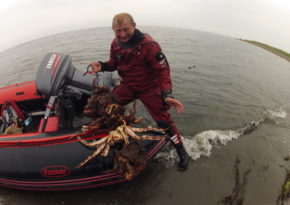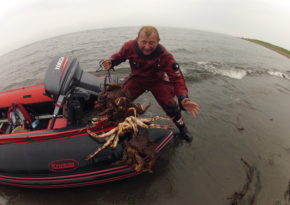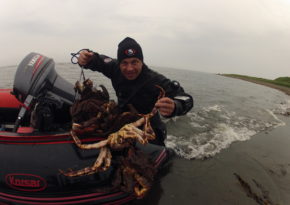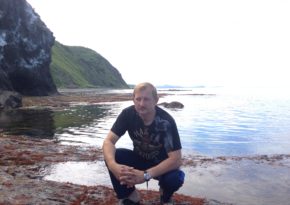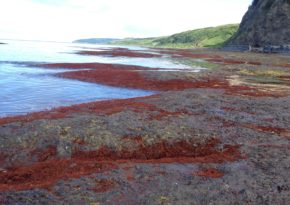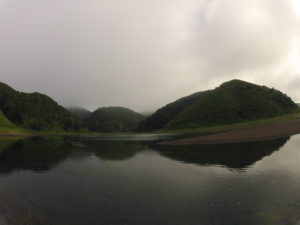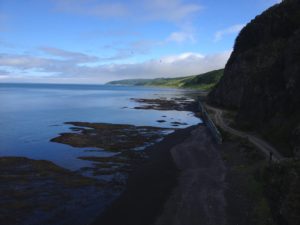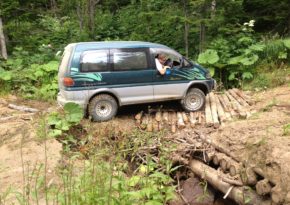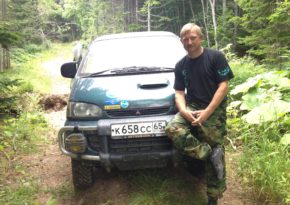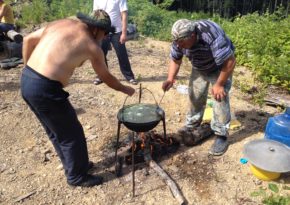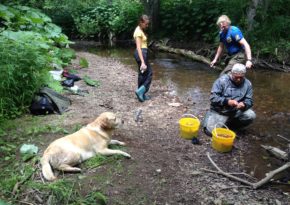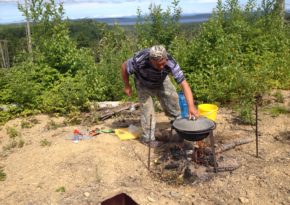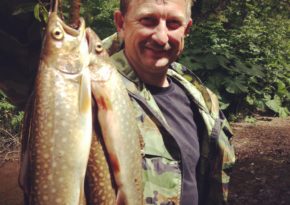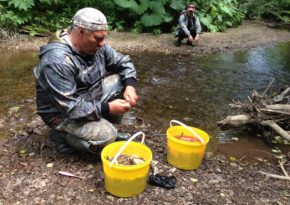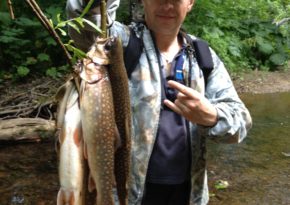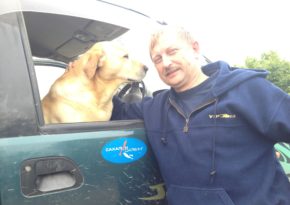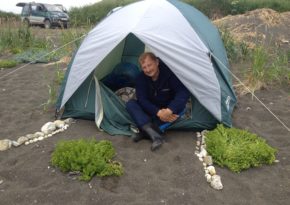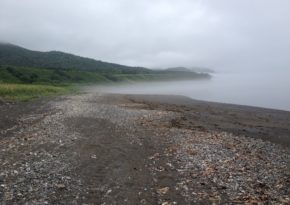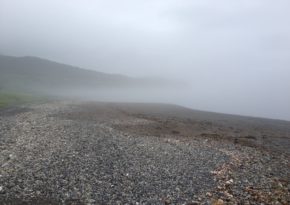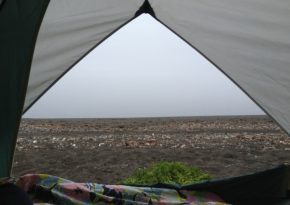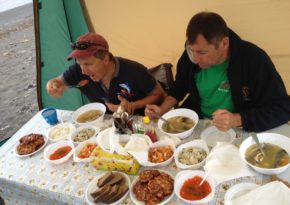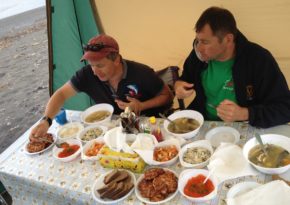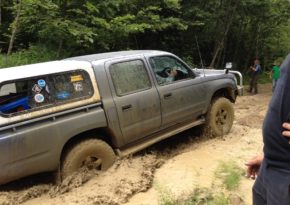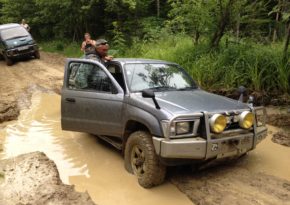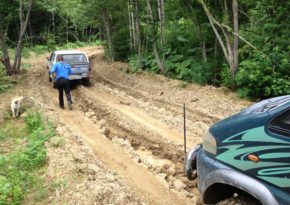My discovery of Sakhalin.
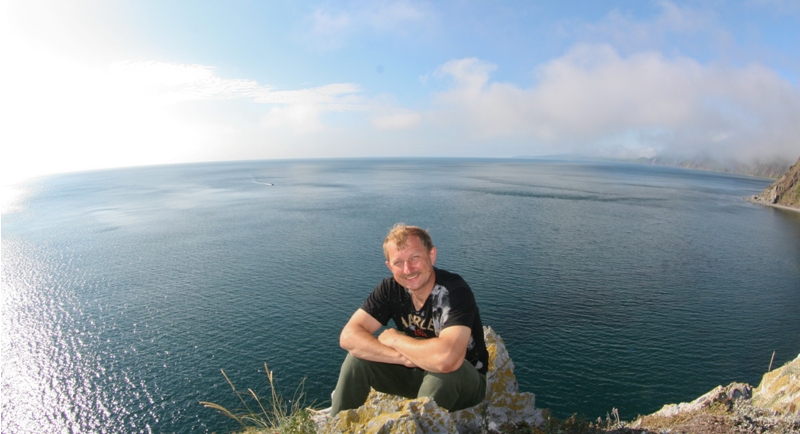
We landed in Yuzhno-Sakhalinsk in the morning of July 21, 2013, being brought by the Aeroflot airlines company. We had flown over the whole country and our flight lasted 8.5 hours! And here we were met by the owner of the site, Vladimir Bardin, who appeared to be a very interesting person. He was a professional “aqualungist” of a Soviet school (not a scuba diver) as well as a simple, well-natured Russian man and an interesting storyteller, who was in love with Sakhalin and really passionate about his business. His site was located in the western part of Aniva Bay, in the south of the island, near the town called Korsakov. This was a place on the seashore, consisting of several wooden houses, which were quite comfortable for living with all the amenities provided.
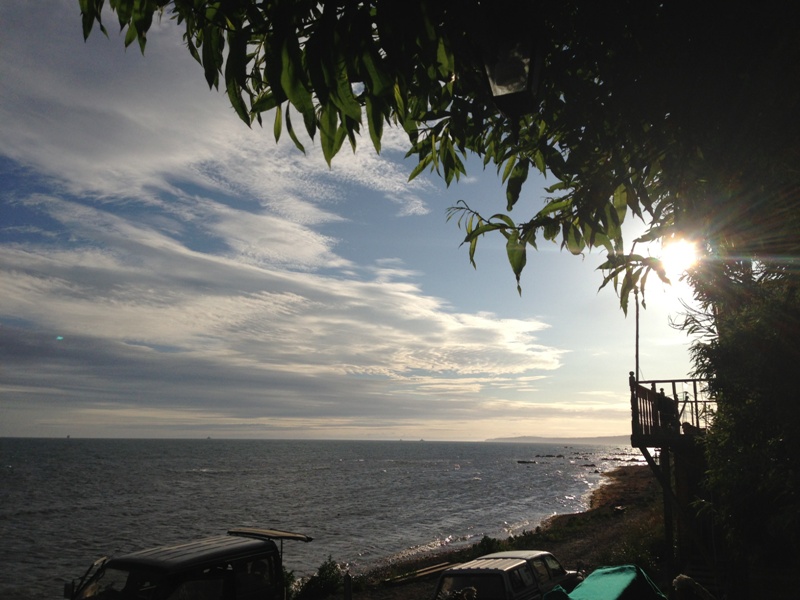
There was also a chic sauna with a deep swimming pool 3×5 m of the size, filled with the sea water, a separate dining house, and other household buildings. We arrived on Sunday and the three of us stayed in a separate two-room house with an attic, so everyone had a separate "room". We had a toilet, a washbasin and no air conditioning, however, it is not needed here, despite the fact that the weather was quite hot all summer, which is not that typical for this area.The rivers became shallow, therefore fish did not spawn. The house stood 10 meters from the water's edge and at night, falling asleep to the sound of the waves, we had a feeling that we were on a yacht in the middle of the ocean. Though for some reason there wasn't any storm.
The sauna was also located on the edge of the shore and on a small hill. It consisted of a steam room with a stove-heater, a washing room and a spacious recreation room with a large table and huge windows overlooking a gorgeous seaview. When you are sitting at the table and slowly drinking tea, being exhausted after another visit to the steam room, you keep your eyes on these windows as if they were a giant TV-set, which channels show only one endless series about the sea.
A red ship of the emergency rescue service and several tugs are constantly looming on the horizon, waiting for the arrival of another huge vessel with giant spherical containers on the deck. When this fantastic ship approached the fairway, tugs turned it around and brought it to a special berth for pumping liquefied gas. And even further away, at the very horizon, we could see an oil platform (a tall tower with a long beak, from the end of which a huge hose was hanging). From time to time some empty tankers approached it and maybe for a day or more Sakhalin oil was flowing through this hose into their bottomless holds. Having filled their bellies and sunk into the sea for several meters deep, they slowly left towards Japan. Another millions of dollars must have been dropped into someone's bank account in the offshore state of Gibraltar…
On Monday, July 22, we had our first dive near the site, going a couple of kilometers away from the shore by a rubber boat and falling to a 15-meter depth. My partner (buddy) was Vadim Korshunov. The water was a bit cold, reaching the temperature of +5°C at a depth of more than 12 m. And at the surface it was +20°C. The bottom was rocky, there were fish, scarpens and scallops, though quite few of them together with seaweed and some beautiful, diverse sea anemones.
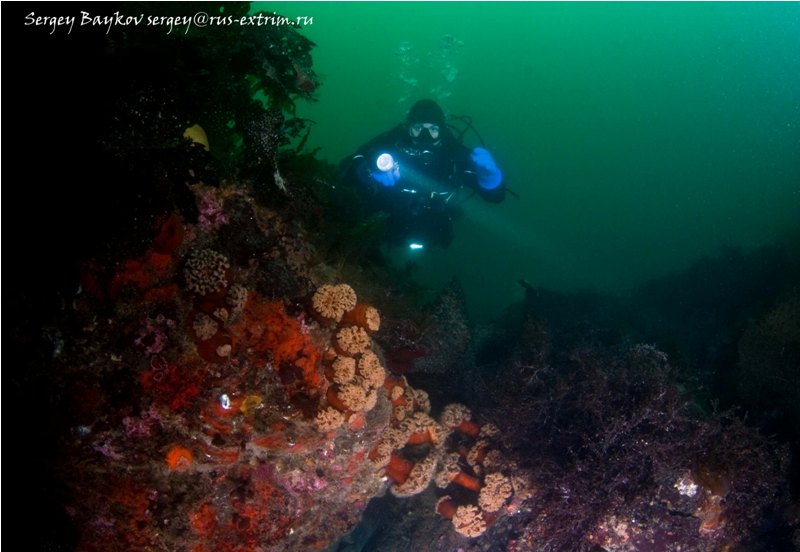
After the dive we had a delicious lunch, drank Japanese contraband whiskey from a 4-liter plastic bottle and ate scallops… Then we were having a rest, sleeping, getting over the jet lag. The time difference is seven hours.
Tuesday, July 23
We got up at 7.30 and went for a short walk-jog along the sandy shore. The tide is pretty high here: the water drops by 1.5 m, exposing the coastal zone-littoral for 20…25 m. After breakfast we loaded rubber boats and all the equipment onto a truck and two more Japanese DELICA minibuses and drove along the coast following the ground road in the direction of the La Pérouse Strait, raising the dust.
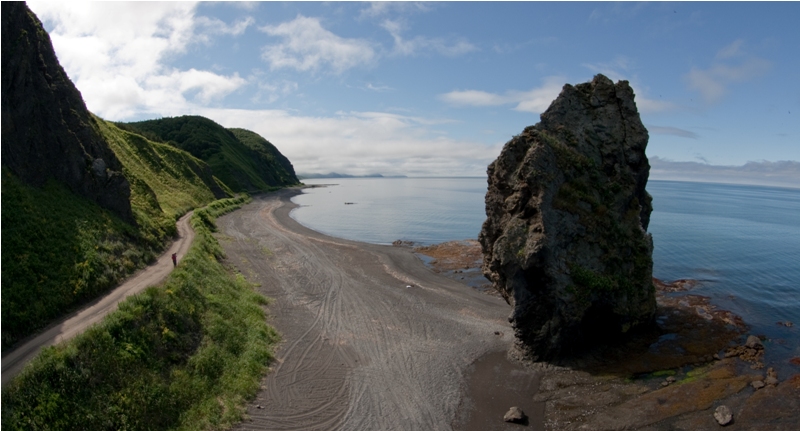
Along the way, in one of the fishing villages, we bought 5 kg of boiled shrimp, which the locals called "chilim". We were pecking them like seeds for the whole two-hour-long journey. Then we made a stop on a sandbar and unloaded our property.
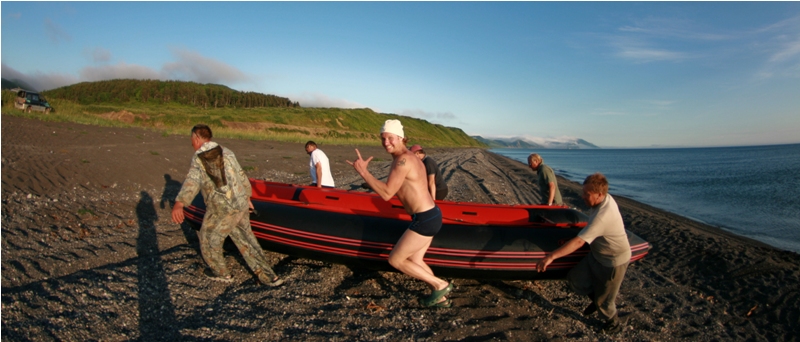
We inflated two boats from diving cylinders, loaded all the equipment on them and went in the direction of the Marble cape. We reached it in 40 minutes. There we saw a small cove and a whitish rock, 30…35 m high.
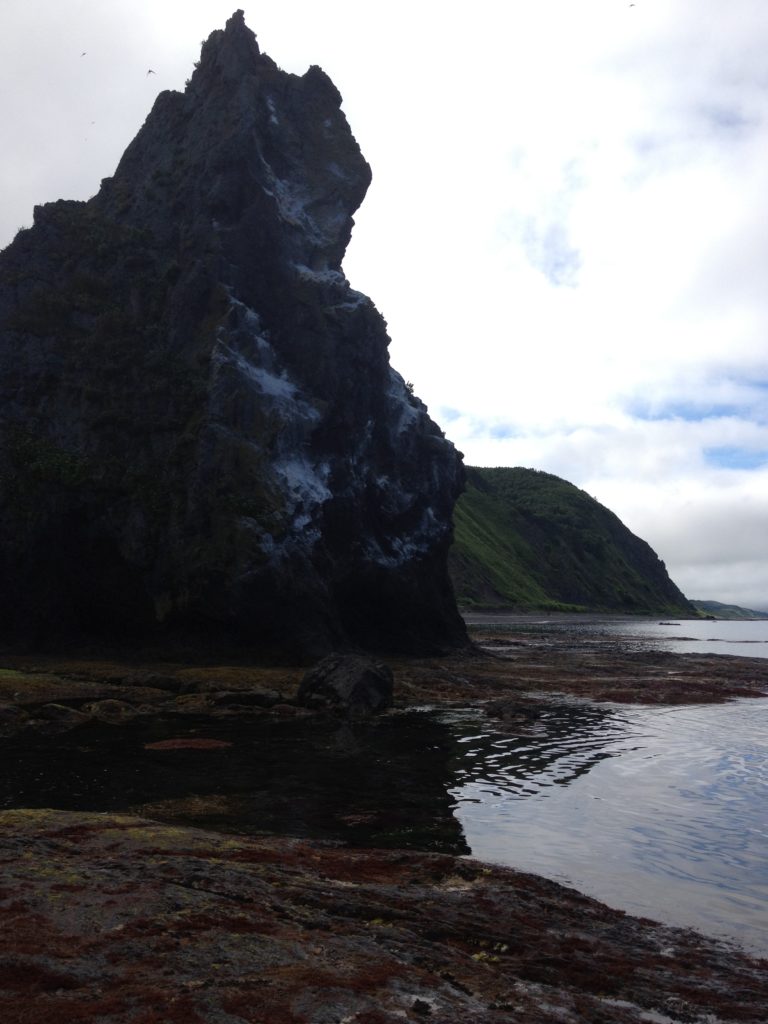
There was a cave in the rock with a diameter of less than a meter and a depth of about 5 m. Vladimir said that this was the dwelling of an ancient man, which was five thousand years old nowadays. We took his word for it. Then we climbed to the rock and crawled into the cave as well.
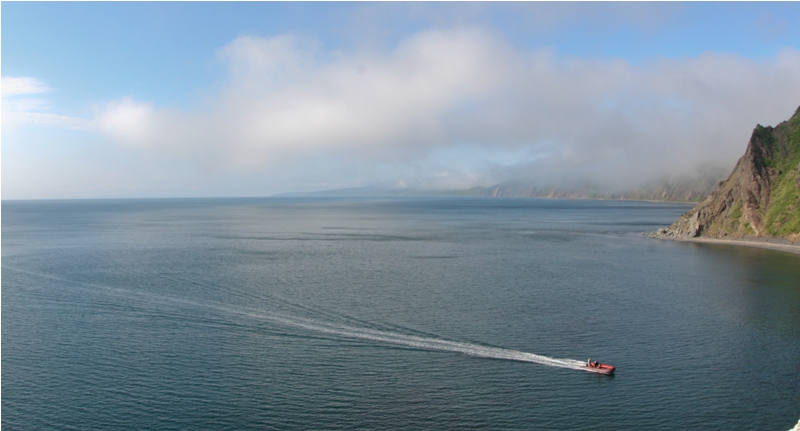
We took some pictures and threw the rocks from the cliff to the La Pérouse Strait.🙂 The views were awesome! The low mountains along the coast were all green and between the peaks a thick blanket of cotton clouds slowly slid down to the sea. The weather was sunny, there was almost no wind and it was quite warm, +25°C. Diving in this area is really interesting. The depth is 19 m, the temperature of the water is +1°C and the visibility can equal up to 10 m far. There were a lot of scallops, fish and we caught a little flounder. We also saw a lot of soft corals of various shapes and colours. Some looked like giant mushrooms, others resembled flowers on thick legs. I felt a little cold, but it was okay.
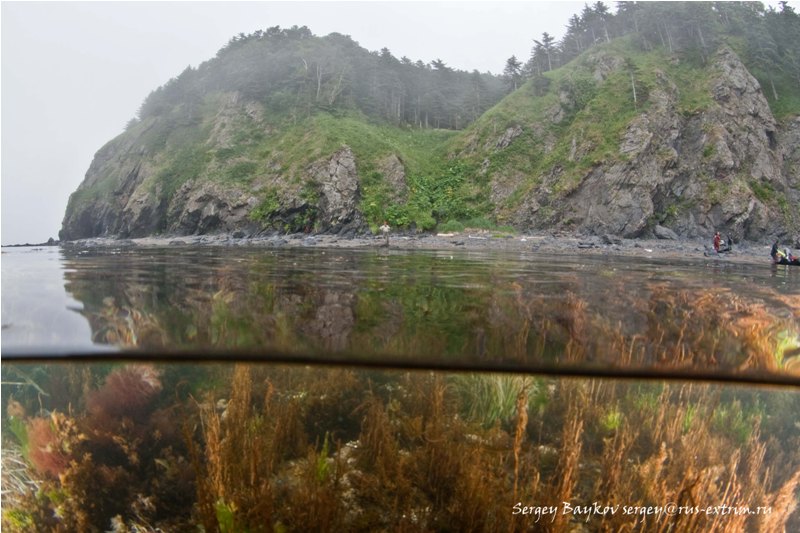
After the dive we had lunch from the thermos flasks that we had brought with us. We enjoyed the scallops with wasabi sauce. Superb! It's just a pity that we had left the whiskey at the site…
On the way back we stopped at the village store to buy a box of local beer.
We returned back at 10 p.m., when it was already dark.
Wednesday. July 24.
We slept until 10 a.m. That must be the effect of the acclimatization.Today we had a fishing trip to the mountain river, which was flowing in the forest. We went there by cars, following an old washed-out forest road for several kilometers, then walked 600 m through the forest and got down to the river.
The width of the river was a bit less than 5 m and its depth ranged from 20 to 40 cm. We unwinded our fishing rods, swarmed the worm, threw the lines and took out the fish — trout and malma or sima and kunzha according to the local dialect. You can get them on the hook immediately and almost everywhere. It is better to fish at snags, in backwaters under the shore.
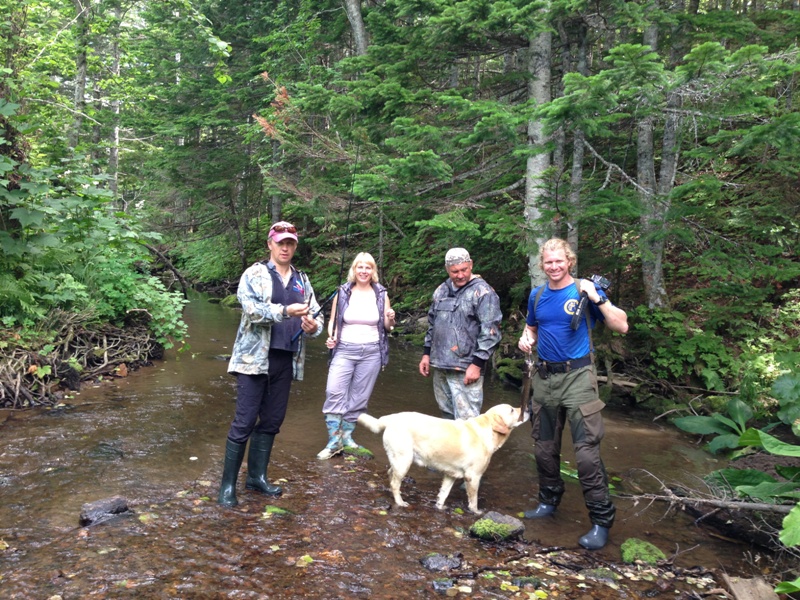
The length of the fish can vary from 5 to 18 cm. There are also bigger ones, up to 2 kilograms of weight, but it is difficult to catch them with a fishing rod. However, you can use your hands! Big fish usually hide in the backwaters behind snags, so if you put your hands in there, you can seize it and pull it out by the gills.
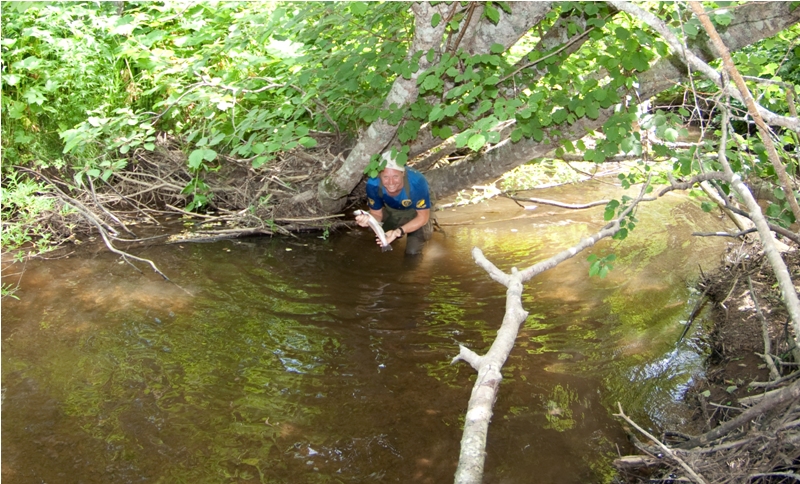
This way we caught about eight big trout, 30…40 cm each. And we also caught a whole bucket of small fish with a fishing rod. Then we lit the fire in the clearing and cooked a tasty fish soup from freshly caught river trout.
We set up a folding table and prepared the soup in a large ten-liter pot, while trying out cold vodka as well. It was fantastically delicious!
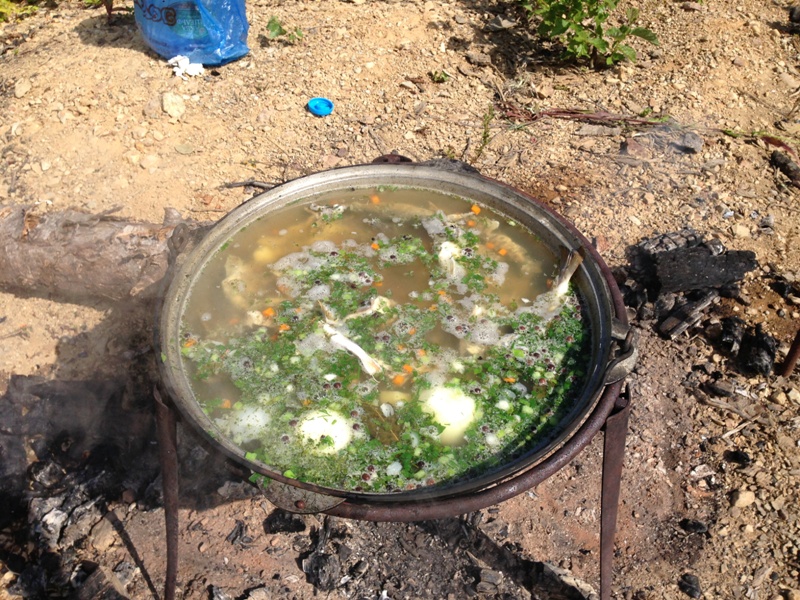
We came back at 7 p.m. In the evening we went to a sauna. We were steaming with fresh fir and birch brooms, taken today from the forest. What’s more, we had some beer and talked about everything. Gathering all together in the dining room, we discussed our plans for tomorrow and then went to bed.
Thursday, July 25.
We got up at 7.30. Today we were supposed to go to the Bird’s cape. It was far away, on the east side of the island. According to our plan, we would stay there in tents for two days and three nights, but the following morning made its adjustments. The wind blowing from the sea was up to 10 m/s. A bit chilling. At breakfast Vladimir said that there was no point in going to the Bird’s cape that day. So we had to wait for the good weather.
We made up another plan: to go to Lake Buse and collect oysters from a unique natural oyster jar (the only one in the world). We went by two Delica cars and a truck loaded with equipment and a boat, and finally reached the shore of a salt lake, which was connected to the sea by a narrow strait.
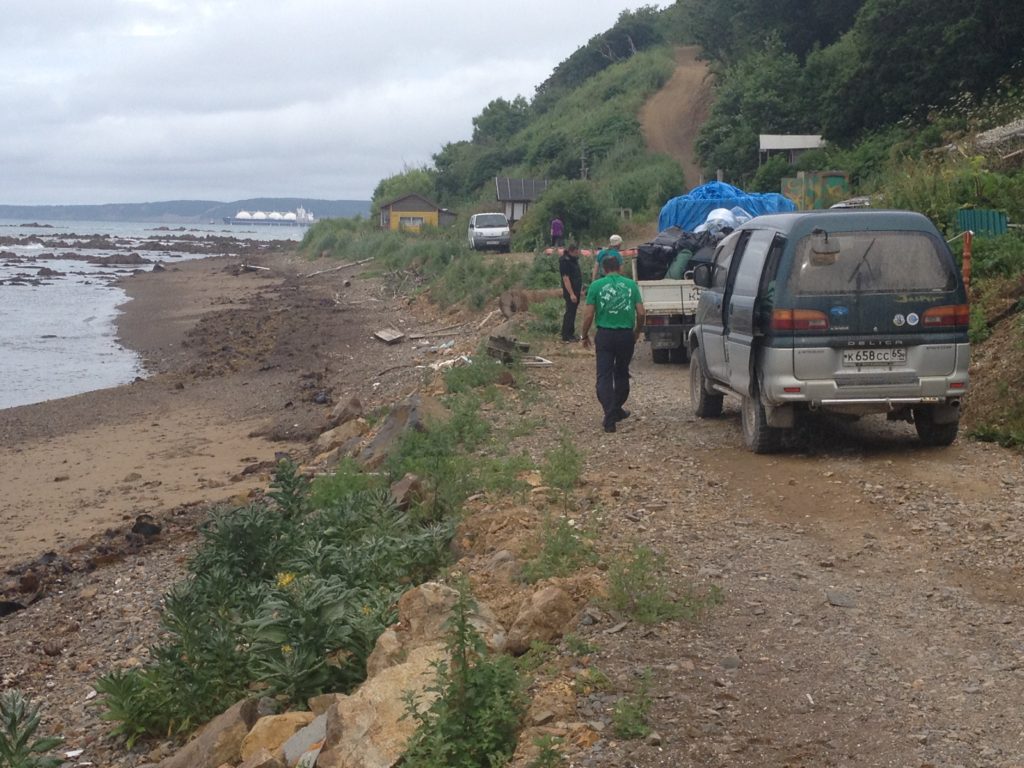
We arrived at a low tide, when the water was flowing out of the lake towards the sea as a bubbling river. The maximum depth near the island of Buse is not more than two meters, so such a dive could be described as crawling along the bottom in search of shells of various types for future soup and picking them up into a grid. The entire bottom was littered with giant oysters: some reached 30 cm or even more in size. We didn't take them, because there were SO MANY oysters that we could gather a full grid without moving a single meter. The visibility in the water was no more than two meters.
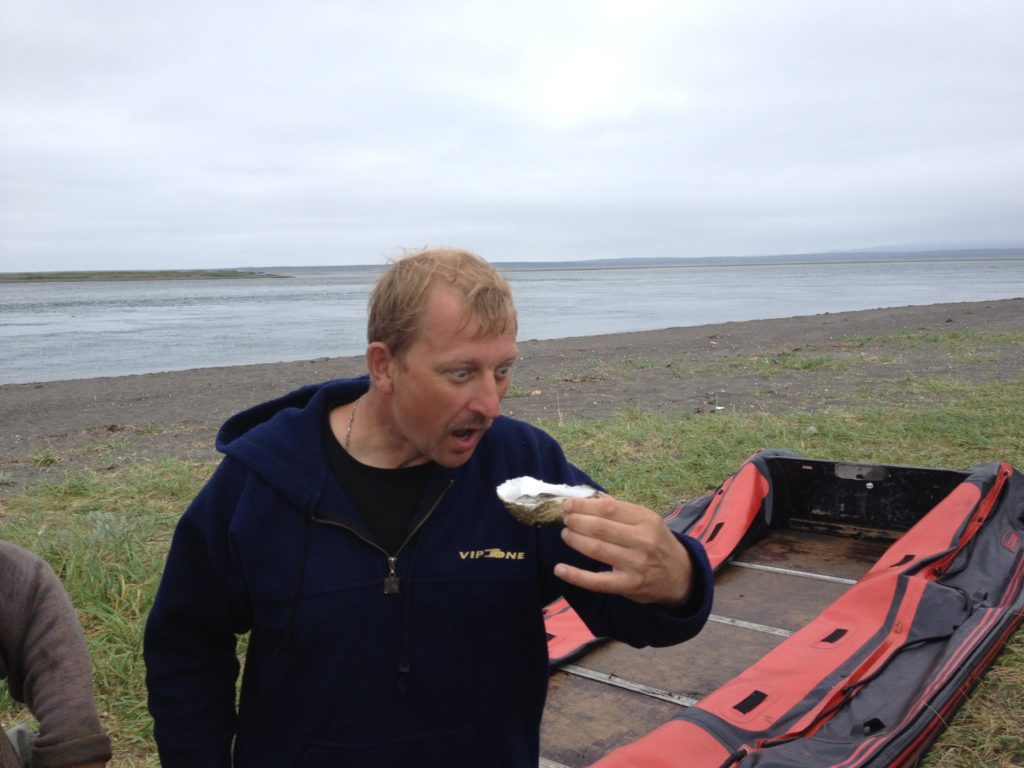
A strange Englishman, whose name was Simon, came to us. He was a collector of shells and travelled around the world in search of rare specimens. He asked us to bring some shells from the bottom many times. He distributed his business cards to everyone, which described the subject of his interest in detail. But no reward promised… He seemed to be a weird man, to be honest.
We returned to the site at 6 p.m., dismantled the equipment, then went to the sauna, had dinner and went to bed.
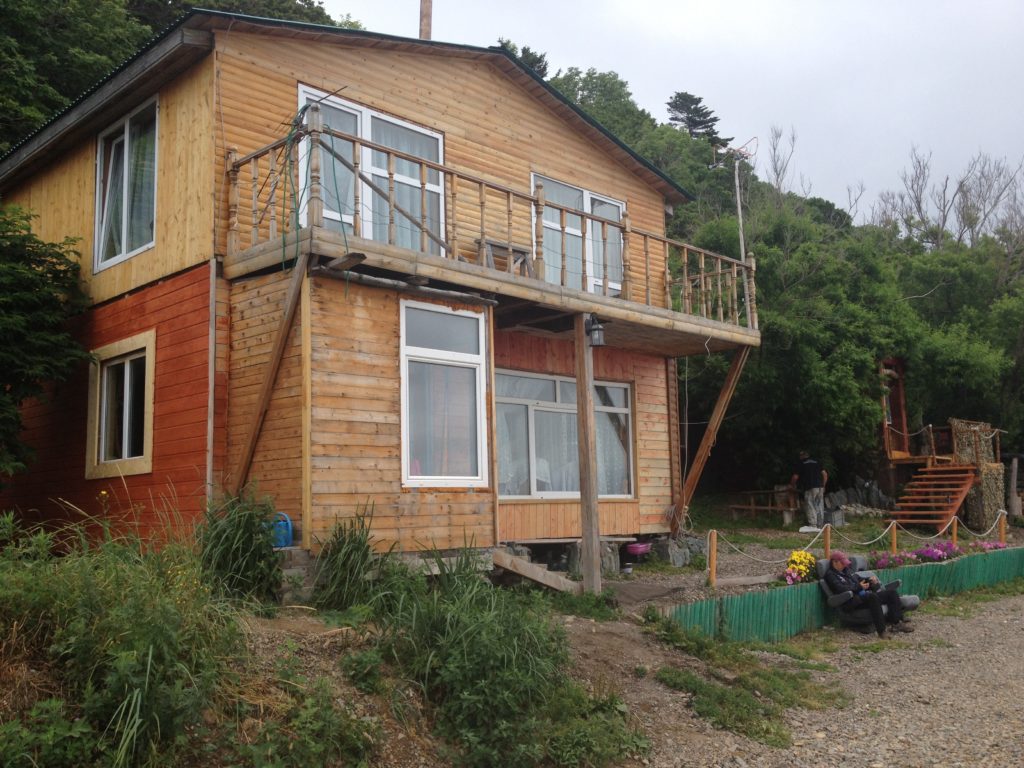
July 26. Friday.
We woke up at 7.30 a.m. For breakfast we had some semolina porridge and pies with rice and egg. Everything was very tasty.
It was cloudy. The sea was restless, the downwind and the rolling waves meant there was nothing to do under water, since visibility would be poor. We decided to pack our stuff and go to the Bird's cape.
The way to the eastern shore of Sakhalin took us more than two hours.
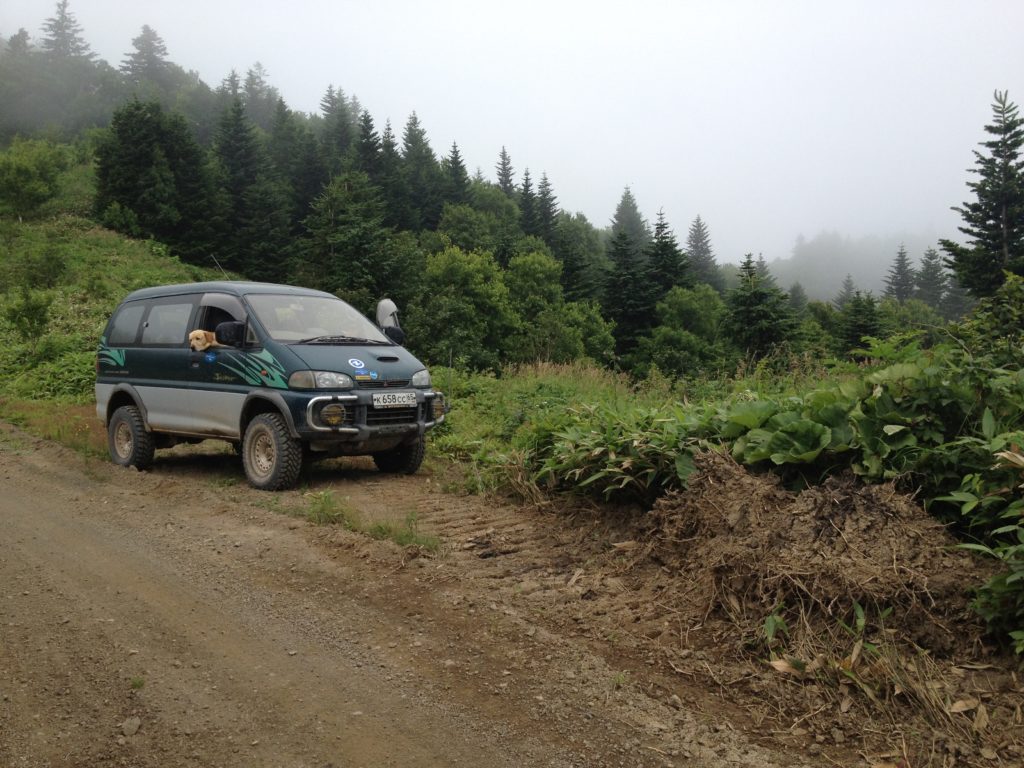
Winding along the slopes of the mountains, the road led us to a long sandbank. A thick fog was hanging over the sea and a powerful iodine smell hit the nose, as if someone nearby had opened a bottle of ten-year-old LAPHROAIGE Scotch whiskey. We unloaded our luggage and set up the tents.
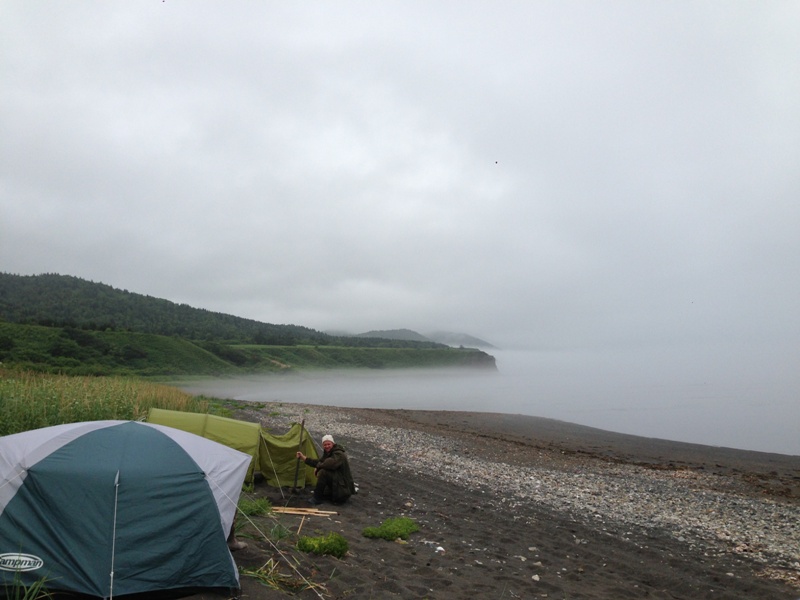
I chose a place 15 m from the water's edge, with access to the sea. While the utility tent was being set up, we were sorting out other property. The sea went 30 meters away, leaving woven algae, shells, crab claws and shells, white-polished pieces of trees and stones on the sand.
The fog was thickening, enveloping the coast and the sea. It was not possible to dive, so we took fishing rods and went fishing. Less than a kilometer from the parking lot we came across a small river flowing into the sea, which was similar to the one where we had been fishing last time. Poking the wet ground with a stick, I found a worm, strung it on a hook, set the float to a depth of 15 cm and threw it a meter from the shore. Five seconds later a rainbow trout was beating in my hands. And in less than an hour we caught half a bucket of fish.
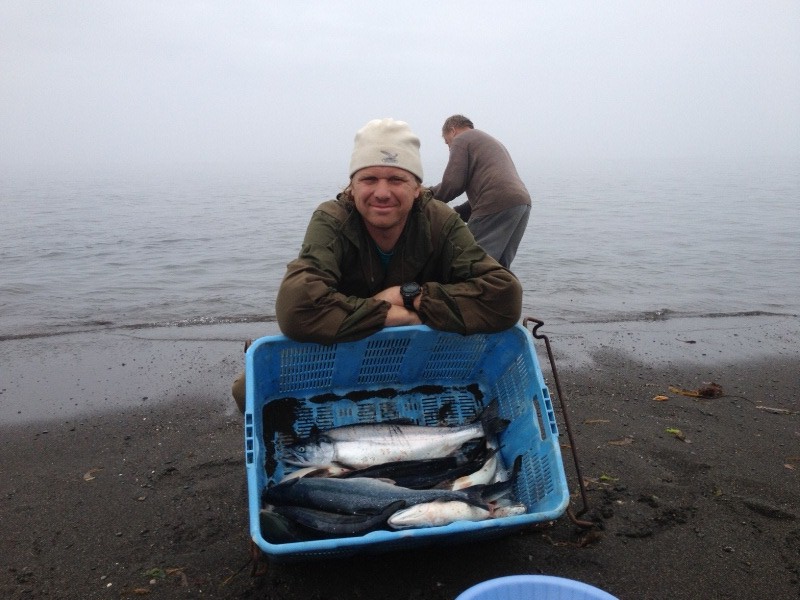
The dinner was simply gorgeous. We prepared a soup from shells, trumpeters, scallops, shrimp and several types of fish, then there followed fried trout and kunzha and seaweed salad…
Evening gatherings around the campfire accompanied by the sound of the sea and sharing stories about unforgettable adventures, terrible bloodthirsty sharks and incredible fish, which one of us once had met, brought another day on Sakhalin to an end.
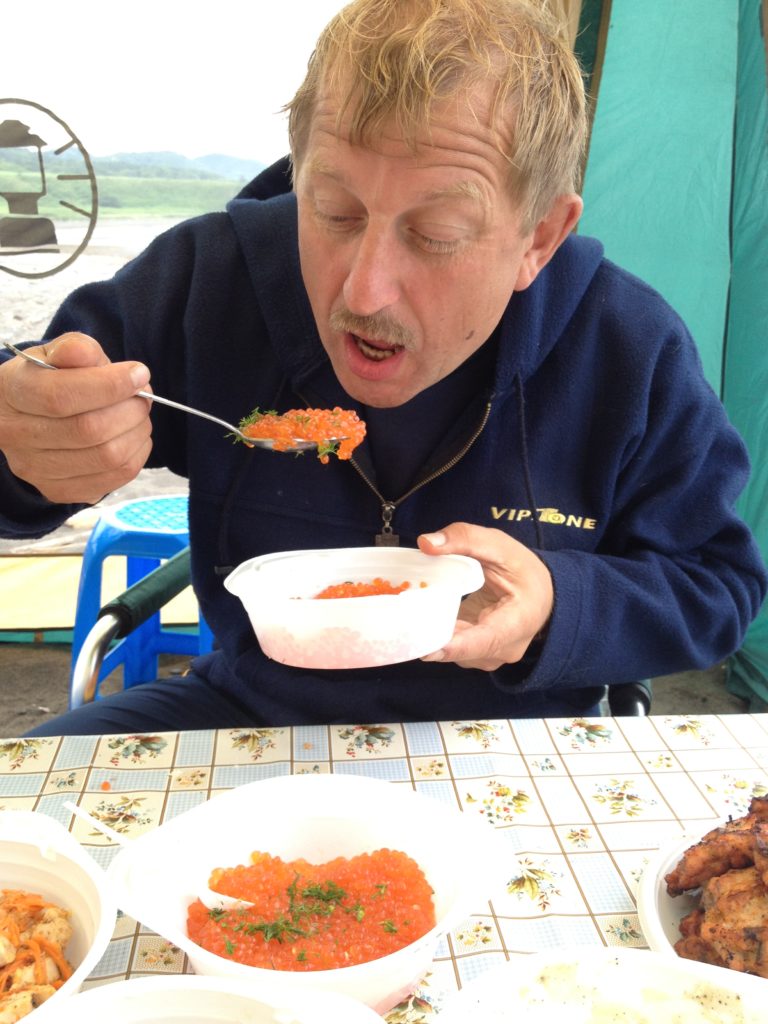
July 27. Saturday.
My healthy sleep in a tent, being accompanied by the sound of waves' rustling was suddenly interrupted by the joyful exclamation of my buddy."Wake up! I've already caught some fish and you're still sleeping!" with these words Vadim's satisfied face appeared in the entrance doorway of my temporary house. Indeed, he brought a plastic basin with him, which was full of big silver fish. All of them were taken out of a small net placed the day before by the leader of our expedition near the camp. The fog had not cleared yet, but it was decided to make a trial dive at a shallow depth.

Having loaded the cylinders, cargos and fins onto the boat and put on the wetsuits, the four of us, not counting Vladimir and Edik (the smartest dog of a Labrador breed), left the shore. After 400-500 m the land dissolved in a foggy haze.
Under the water we immediately got into a pretty strong whirl. Its power was dragging us over boulders back and forth at the shallow depth. The long, wide kelp, wriggling like the tentacles of a giant octopus in a bizarre manner, were wrapping around us, trying to pull us into the nearest crevice.
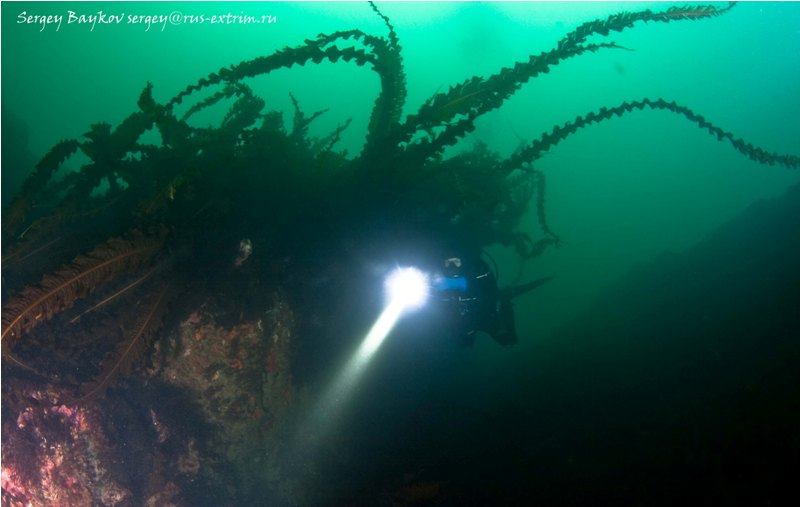
The second dive was planned at the cape Menaputsi, 10 km from the camp. It took us half an hour on a rubber boat to get to this beautiful place! A small bay, protected from the winds by a rock protruding into the sea, was connected by a narrow strait with a small salt lake. And behind it, in a haze of clouds and fog creeping along the slopes, we could see the mountain peaks. What was it? Switzerland? Or maybe the Alps? It was certainly cooler! This was Sakhalin!
Approaching the cape by boat, we saw a bleak picture. Despite the wind and waves, the sea was covered with thick fog, so the visibility was no more than 50 meters. In such conditions it would be very problematic to find a diver coming to the surface. We decided to dive in groups of three people alternately with a buoy launched at the beginning of the dive, which would serve as a marker indicating the location of the group.
The underwater world impressed us with its diversity. Dozens of types of corals that had bizarre shapes and different colours were really stunning! Under the wide ribbons of seaweed a flounder disguised at the ground. The king crab was slowly searching for its prey, slightly moving its huge claws. That's exactly what we needed! Crab hunting is such an exciting activity! The weapon is a simple kukan, which consists of a 2-meter-long rope tied to a metal rod, which pierces the shell through. In half an hour we scored a dozen and a half crabs weighing from 2 to 3 kg each.
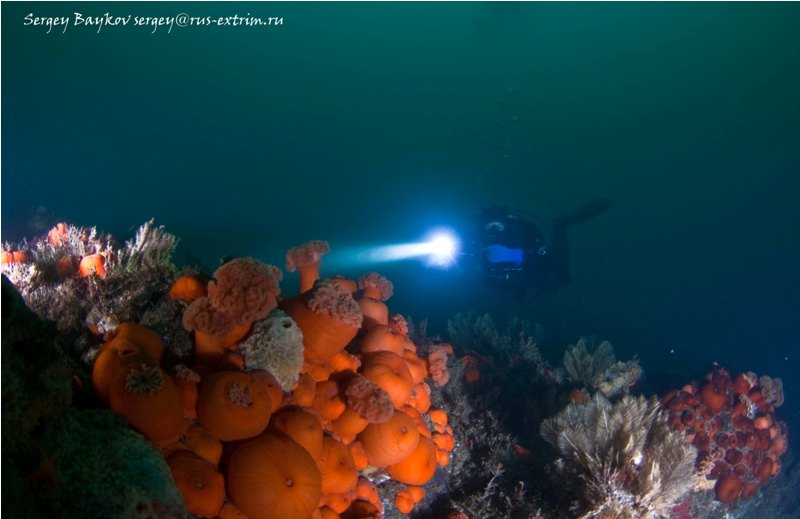
And in the evening we had a dinner, accompanied by the rustling of waves and crackling of a fire lit under a large cauldron, which contained the seawater with the orange-colored claws of a king crab. And the new stories told by Vladimir Bardin
about how he had earned a huge sum of money in his youth, collecting tons of sea urchin and trepang on the Kuriles by diving himself to get them out, wearing lead boots and a three-bolt equipment.
Our expedition to the east coast of Sakhalin lasted three days, after which we turned over our camp and came back to the site on Monday, July 29. What could be better than a good Russian sauna after returning from a trip? Only a sauna with a glass of beer and a portion of a dried and smoked flounder, of course!
June 30. Tuesday. The weather is not fine at all. Out yesterday's plans to dive at the cape Giant had to be canceled. We decided to go to the Marble cape instead. The road led along the coast and this time we made a stop at an abandoned fishing base. Several dilapidated one-storey buildings, the former barracks of the training base for combat swimmers of the Japanese Navy now made up a sad sight. They had broken windows, broken doors and a dilapidated roof. In addition to all the things aforementioned, there was a broken, mangled NISSAN motocar dating back to the 1990s, which was resting alone by the road.
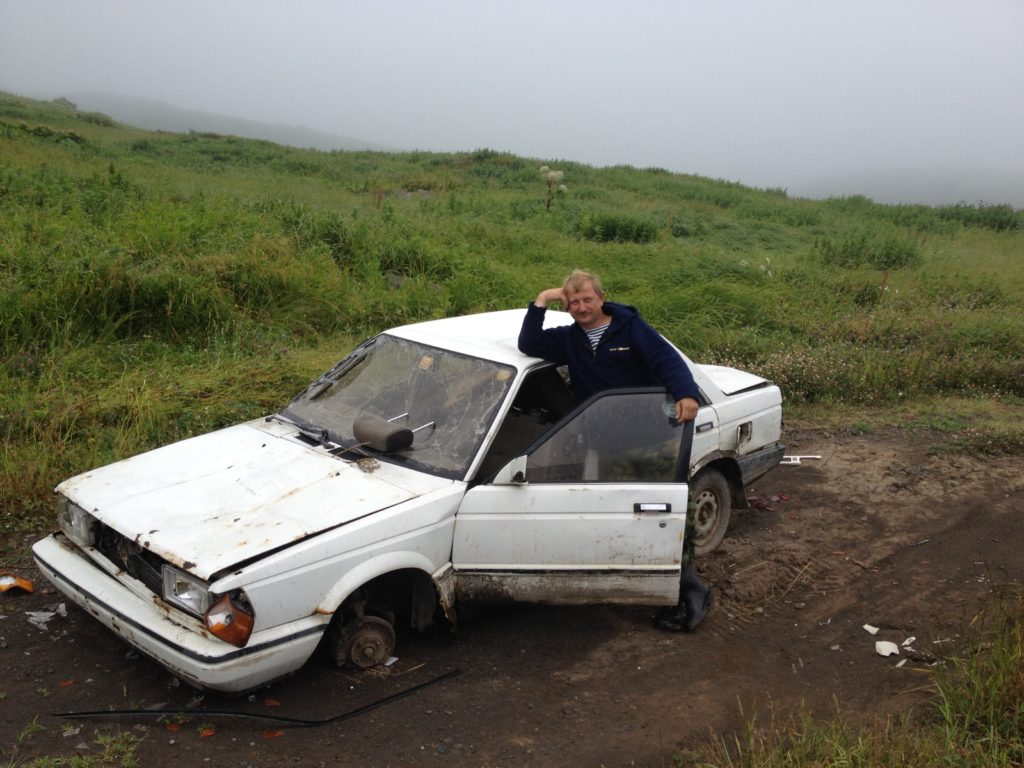
This time the Marble cape met us with a strong pressing wind and the sky covered with clouds. Our boat departed from the shore for like 500...600 meters away and at the count of "three" we jumped over the opposite sides, falling into the water. Without lingering on the top, we almost immediately went to the depth, following the compass and taking an angle of 240° to the shore. The dive was quite interesting: there were a lot of fish, a beautiful landscape with rich vegetation and scallops. After 30 minutes we got a bit cold and decided to finish the dive. Going up, we saw that the boat turned out to be quite far away, picking up the second group. While we were underwater, the wind became stronger and the waves were already about 1.5 m high and fairly quickly were carrying us into the open sea towards the La Pérouse Strait. It was possible to breathe only through the second stage of the regulator, as the wave was periodically covering us with our heads. Finally, the boat came up and we grabbed the ropes on its sides to take off the cargo belts and disconnect the blow hoses and cylinders with BCD. Since I was diving with a SIDEMAUNT suspension (it had two cylinders on the sides), their fastening and removal required the use of both hands, which complicated the finishing process a lot. As soon as I took my hand off the side of the boat, the stream would immediately carried it (or me) a few meters away, rising another wave. And that very moment I was unlucky with the hose of the dry suit blowing. It wouldn't restrain. Yeah, the sea near Sakhalin is quite unpredictable, since the weather and the wind direction can change any moment and present their surprises!
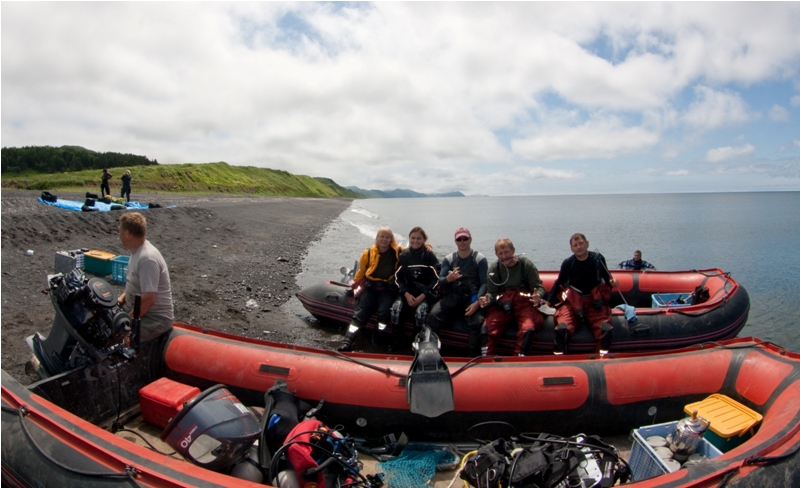
The second dive took place in a quieter place at a shallow depth. But in terms of the number of animals and the landscape, it turned out to be even richer. Here we saw a huge catfish (the locals call it a "sea dog"), which, hiding in the kelp thickets, was waiting for its prey. It was a big, about a meter long fish with a giant head and an open mouth from which huge teeth protruded like curved stakes.
July 31. Wednesday.
Vladimir suggested spending the last day of our expedition in a wonderful place. It took us less than an hour to pass the old logging road. Having overcome deep ditches with brown liquid by jeeps, scraping their bottoms against the ruts dug by tractors, and paved our way through the debris consisting of the trunks of fallen trees, we reached a beautiful clearing on the banks of a trout stream.
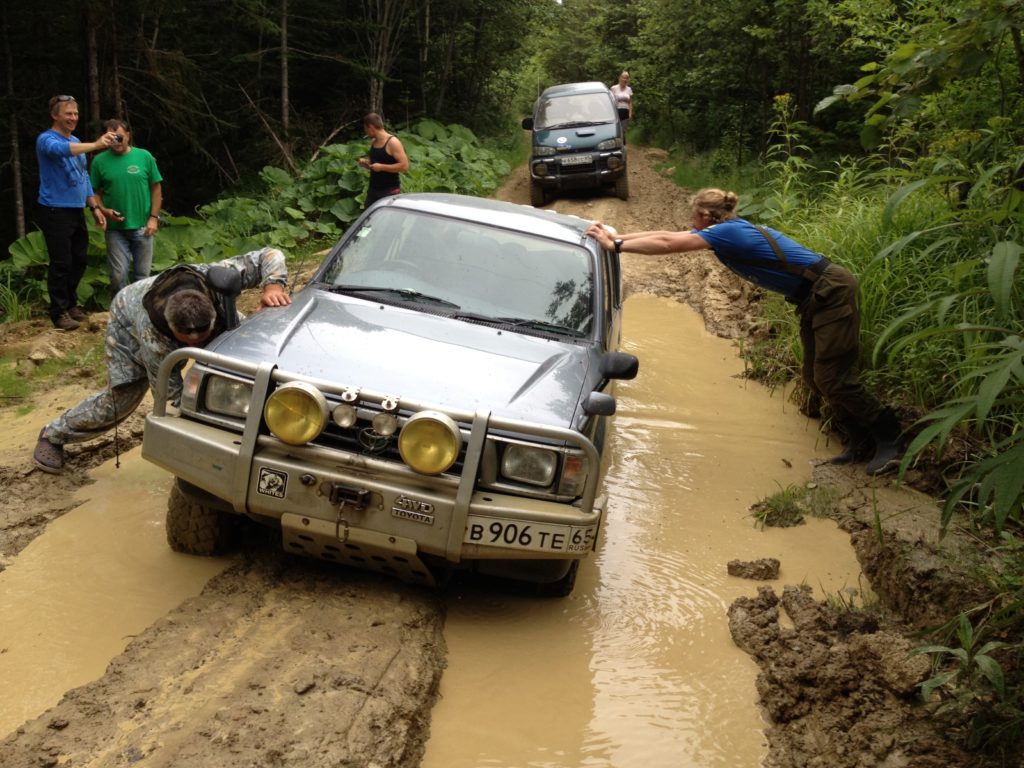
The riot of vegetation was amazing. We saw two-meter high burdocks, whose leaves were the size of a decent umbrella, thickets of Sakhalin bamboo and the bizarrely curved tree trunks that looked like the bridges thrown over a river in which fish splashed. Walking along the coast, we found fresh traces of a bear (apparently, we invaded the possessions of the owner of the Sakhalin taiga). Our assumptions were confirmed by Edik, who suddenly broke the silence with a loud bark. "The bear must be walking around somewhere," Vladimir confirmed our guesses, meaningfully taking fishing gear out of the trunk.Then we did fishing, cooked the mind-blowing fish soup, drank some vodka and fried kunzha on the fire (Alexander and Sergey literally caught it with their own hands).
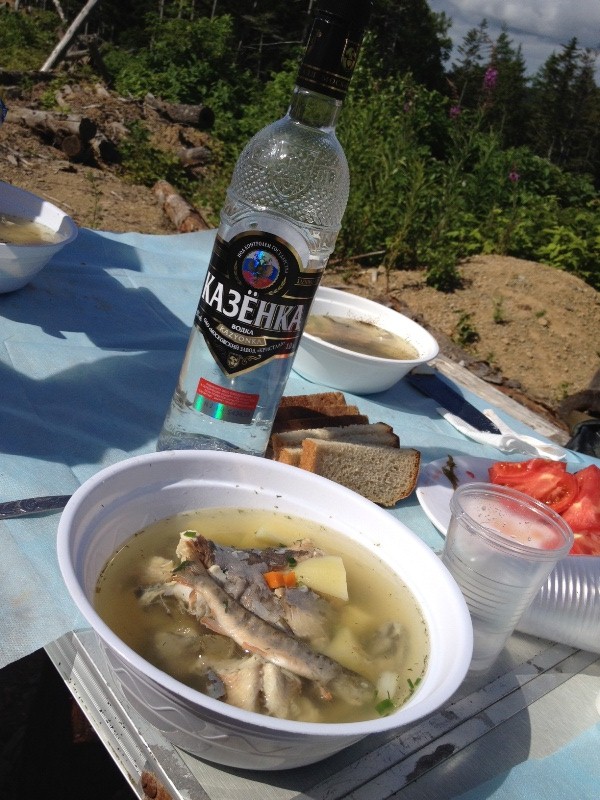
I didn't want to leave…
And in the evening Vladimir invited us to visit his cozy house with a spacious living room. An excellent ten-year-old single malt NIKKA YOSHI
whiskey with a fruit vase on the table, while watching an amazing movie about Sakhalin and the Kuriles, filmed by the owner of the site, completed these unforgettable ten days that we had spent at the edge of the world. This journey was full of hiking, adventures, discoveries and a wonderful mood!
 Cap-travel.ru
Cap-travel.ru